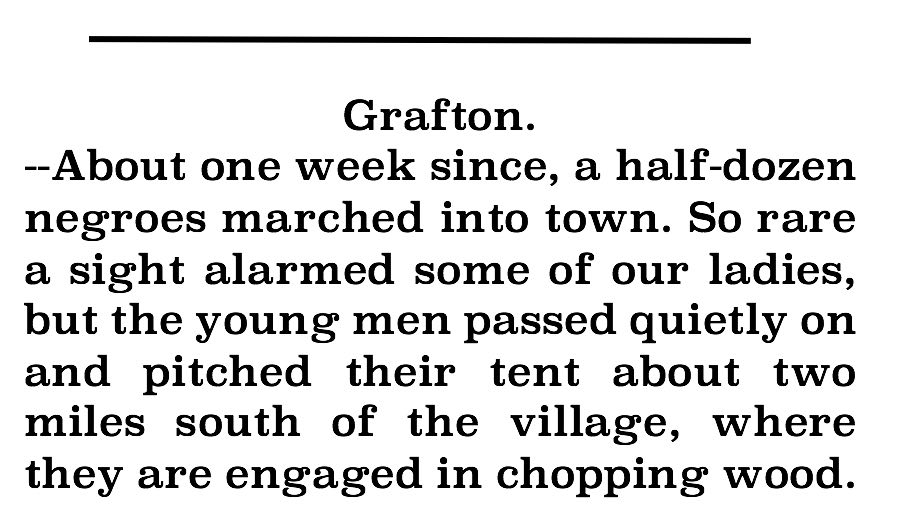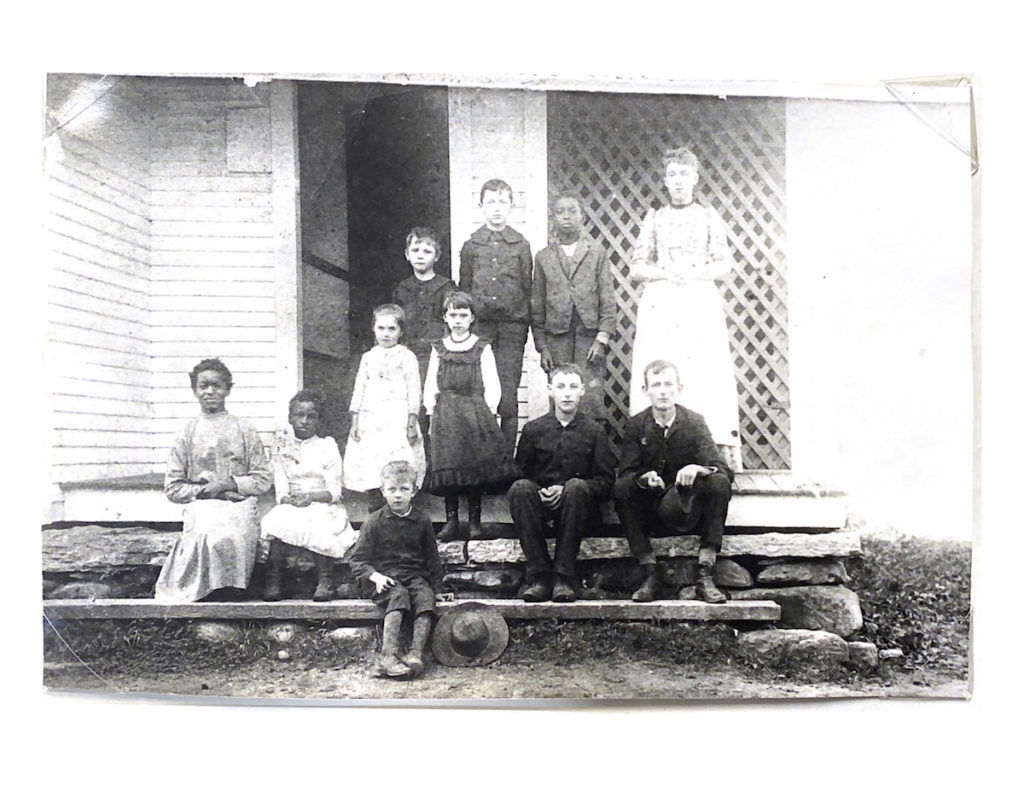Slavery shaped the fundamental beliefs of white Americans about black people, race, and white supremacy. Like everywhere, people in Vermont viewed (and still view) people of color with an implicit bias that is hard to fully overcome. Black people were generally viewed as second-class citizens.
After the Civil War, Alec Turner found work in a slate quarry in Maine. But in the spring of 1873 he left that job because his young wife Sally required medical attention in Boston. While in Boston, Alec saw a newspaper ad from a sawmill operation looking for woodchoppers, which turned out to be in Grafton, Vermont. He met with the owner and was hired. When Alec arrived in Grafton in November 1873, followed by Sally and three young children in June 1874, they were at first received somewhat uneasily by townspeople.
The sources in this lesson illustrate the implicit biases held by white people in Grafton, and demonstrate how they impacted Daisy Turner’s life. Students will first define implicit bias, then look at the 1870 Grafton census and a newspaper brief announcing the arrival of a group of African American woodchoppers in town in 1873 to assess why the ladies of Grafton might have been “alarmed” by their presence. Then students will read or listen to the story Daisy and the Doll and write about how Daisy Turner experienced the shame of being stereotyped but also drew strength from her own inner sense of dignity and self-worth.
Topics
Implicit Bias, Race
Enduring Understanding
Systemic racism is a foundation of American society. Throughout history Black Vermonters have faced bias and discrimination, and this is still true today.
Compelling Questions
How does the Turner family story reveal the workings of implicit bias toward African Americans?
Historical Thinking Skills
Primary Source Analysis; Synthesizing Sources
Activating Prior Knowledge/Building Context
Review the Turner Family Timeline, paying particular attention to the post Civil War sections.
Investigation of Primary Sources
As a class look at the 1870 census for Grafton (with worksheet) and notice the numbers of white and black people living in the town. Then read out loud the 1873 article from the Vermont Phoenix announcing the arrival of Alec Turner and a group of African American woodchoppers in Grafton. Conduct a close read of the article, noting with the students the race of the woodchoppers. Consider the language used to describe how they came to town. What words are associated with the word “march.” Could that word be considered to be a biased description? Why or why not?
Discuss why the ladies of Grafton might have been “alarmed” by their presence. How was this reaction an example of stereotyping and implicit bias?
Examine the Grafton District School #11 with worksheet. Help students understand that this was a one-room schoolhouse with multiple grades (Daisy is sitting second from the left in the front of this photograph with her sister Susie).
Find Daisy and the Doll in your library or watch this read-aloud video of the story Daisy and the Doll and use the discussion questions as prompts for a full class discussion. Or, listen to Daisy tell the story in Daisy’s Black Doll.
Summative Assessment
After examining the primary sources and reading the story Daisy and the Doll, write a brief essay that defines implicit bias and explains how and why the Turner family experienced implicit bias in Grafton, Vermont.
Materials Used in the Lesson
Peanut Butter, Jelly, and Racism
Grafton District School #11 Photograph and Worksheet
Daisy and the Doll Discussion Questions
Daisy’s Black Doll [audio-recording]
Implicit Bias
Who me, Biased? Understanding Implicit Bias [PBS]
A Look at Implicit Bias and Micro-Agressions [Edutopia]
Race
Ali Michael, What White Children Need to Know about Race
Why is Vermont so Overwhelmingly White? [VPR Podcast]


